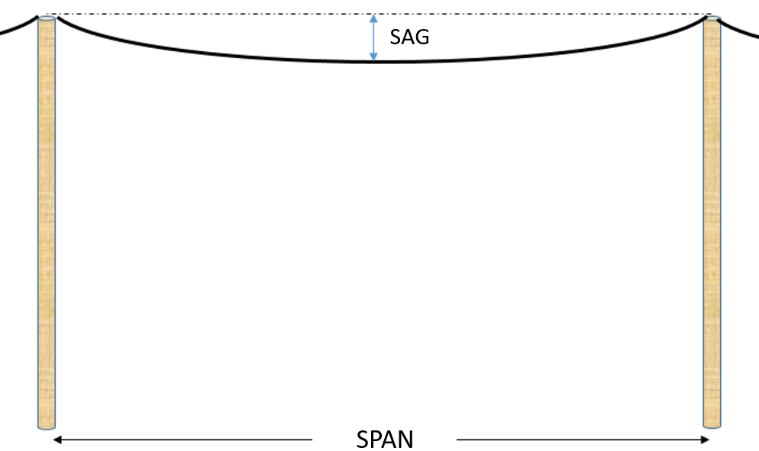In today's rapidly evolving telecommunications landscape, selecting the appropriate All-Dielectric Self-Supporting (ADSS) cable is paramount for ensuring reliable network performance. With an array of options available, making an informed decision requires careful consideration of several key factors. To assist network planners and operators in this endeavor, experts offer valuable insights into the selection process.
When deciding which ADSS cable to choose, the most important parameters are the following:
1. Span: Distance in between pole
2. Sagging: Maximum deviation allowed from horizontal. Occurs due to cable weight and climatic conditions.
3. Climatic conditions: Wind and snow cause additional traction forces on the cable, which makes very important knowing the climate of the area where the cable will be installed.
4. Understand Application Requirements: Before diving into the selection process, it's crucial to understand the specific requirements of your network application. Consider factors such as distance, environmental conditions, bandwidth demands, and anticipated future growth.
5. Assess Fiber Count: Determine the required number of fibers based on current needs and future expansion plans. ADSS cables are available in various fiber counts, ranging from a few fibers to hundreds, allowing flexibility to accommodate evolving network demands.
6. Evaluate Fiber Type: Choose the appropriate fiber type based on performance requirements. Single-mode fibers are ideal for long-distance transmissions, while multimode fibers suit shorter distances within buildings or campuses. Additionally, consider factors like signal attenuation and dispersion characteristics.
7. Consider Installation Environment: Assess the environmental conditions where the ADSS cable will be installed. Factors such as temperature variations, exposure to UV radiation, moisture levels, and the presence of corrosive substances influence the choice of cable construction and protective coatings.
8. Select Proper Cable Construction: ADSS cables come in various designs to meet diverse installation requirements. Choose between loose tube or ribbon construction based on factors like installation method, fiber protection needs, and space constraints.
9. Verify Compliance and Standards: Ensure that the selected ADSS cable complies with relevant industry standards and regulations. Compliance with standards such as ANSI/ICEA, ITU-T, and IEEE assures quality, performance, and compatibility with existing infrastructure.
10. Assess Manufacturer Reputation and Support: Partner with reputable manufacturers known for quality products and reliable customer support. Evaluate factors such as warranty offerings, technical assistance, and responsiveness to inquiries or issues.
11. Conduct Site Surveys and Tests: Prior to installation, conduct thorough site surveys to assess environmental conditions and identify potential challenges. Additionally, perform tests such as optical loss measurements and cable tension assessments to validate performance expectations.
12. Plan for Future Expansion: Anticipate future network growth and scalability requirements when selecting an ADSS cable. Choosing a cable with sufficient capacity and flexibility ensures seamless expansion without the need for frequent upgrades or replacements.

With this data, our engineering team designs the most suitable cables satisfying all requirements, and guaranteeing its correct behavior over its lifetime. By carefully considering these factors and consulting with industry experts, network planners and operators can confidently select the right ADSS cable to meet their current and future network needs, ensuring optimal performance and reliability.


